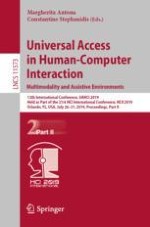2019 | OriginalPaper | Chapter
EEG Systems for Educational Neuroscience
Authors : Angeliki Tsiara, Tassos Anastasios Mikropoulos, Panagiota Chalki
Published in: Universal Access in Human-Computer Interaction. Multimodality and Assistive Environments
Publisher: Springer International Publishing
Activate our intelligent search to find suitable subject content or patents.
Select sections of text to find matching patents with Artificial Intelligence. powered by
Select sections of text to find additional relevant content using AI-assisted search. powered by
